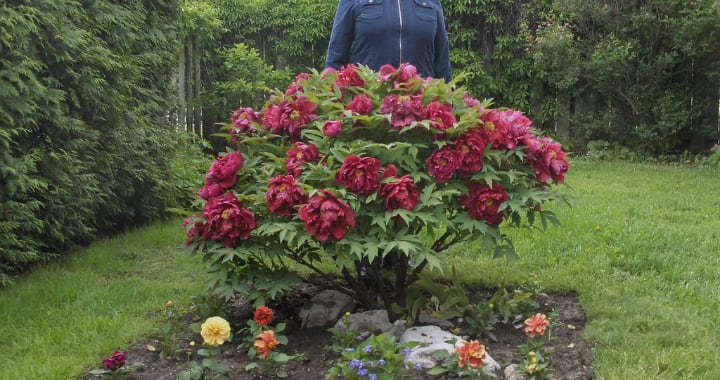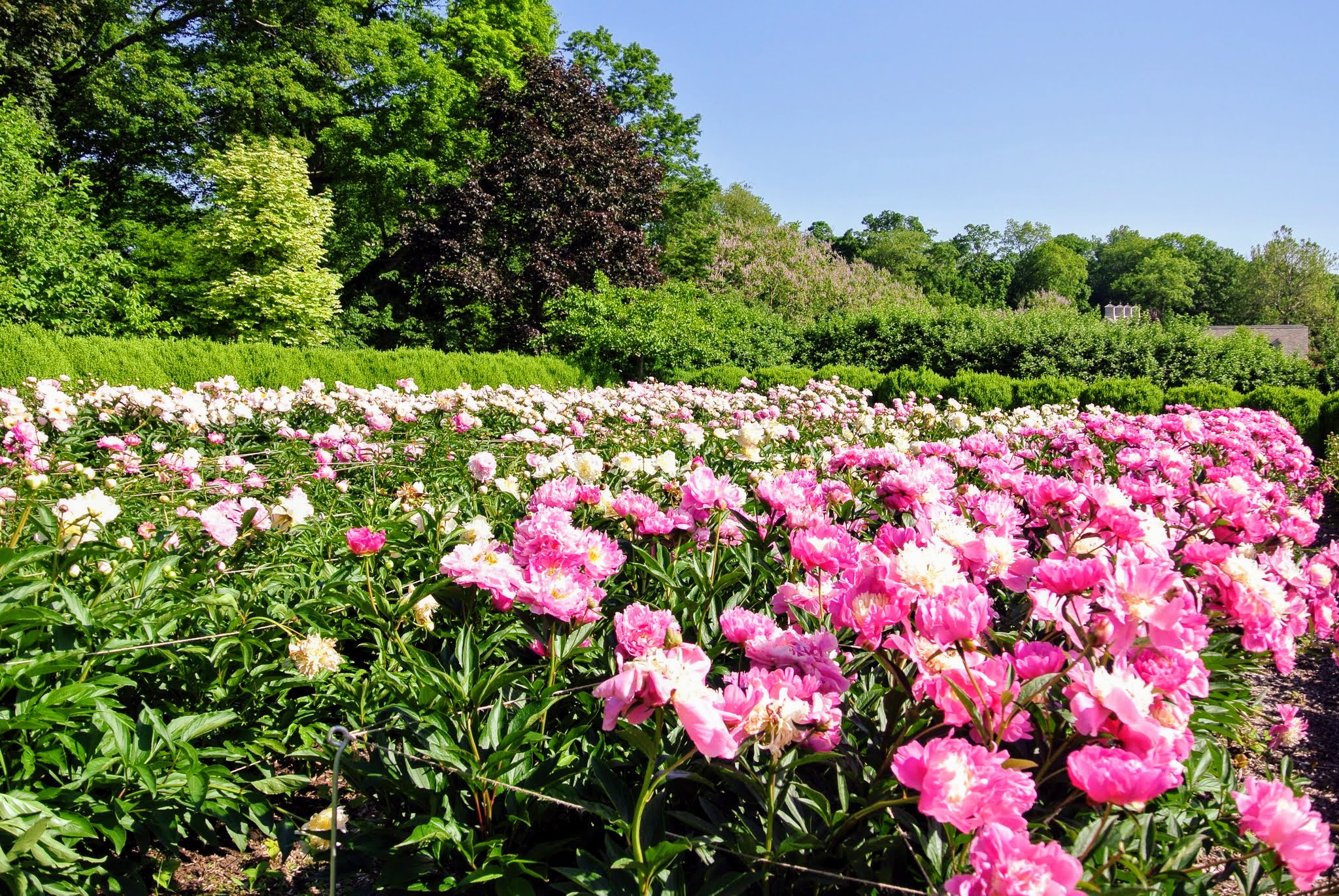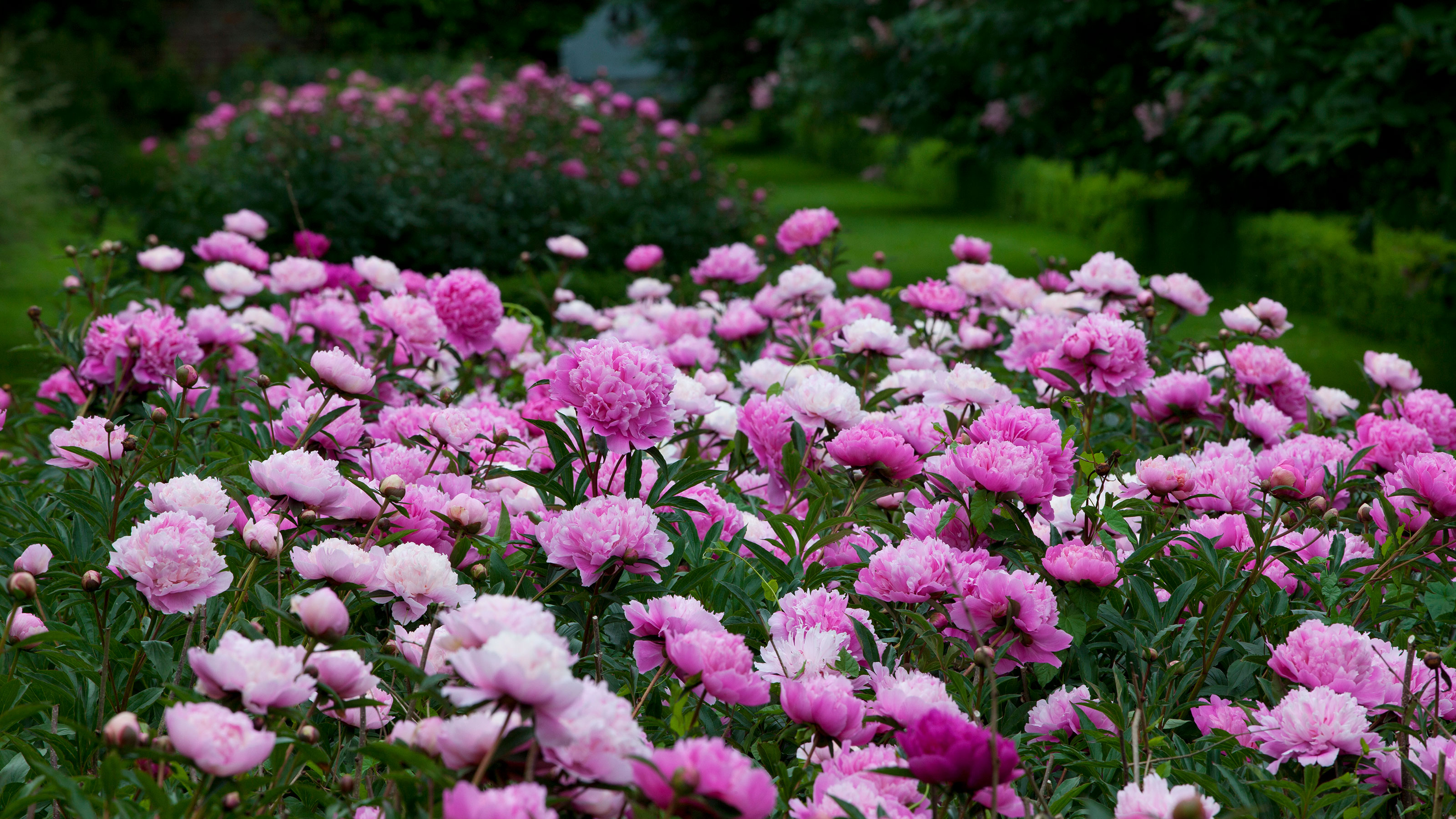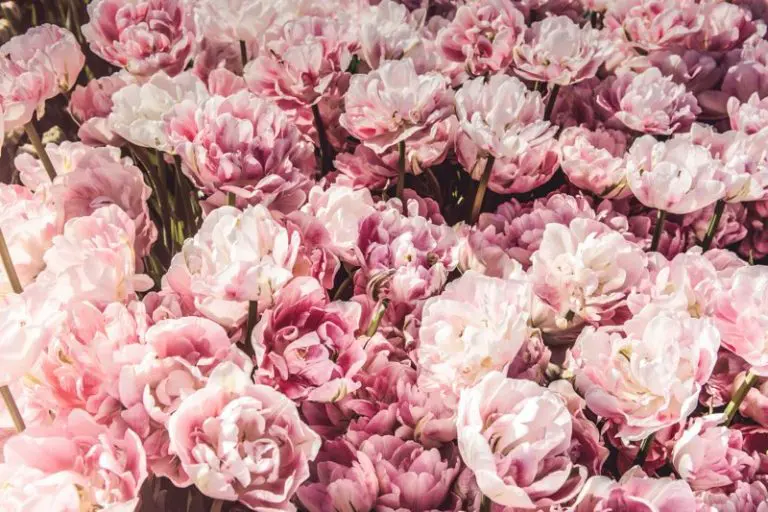Looking to spice up your garden with some stunning blooms? Peonies are a fantastic choice! Known for their large, fragrant flowers and rich color palette, peonies are herbaceous perennials that bring beauty and resilience to your garden. With blooms that usually last for about 10 days, peonies can come back every spring for a century or more—now that’s some lasting power!
Peonies come in a variety of colors, including white, yellow, pink, purple, and red, and there are about 33 species to choose from. Keep reading to find out the best types of peonies and all the essential tips you need to grow and care for them.
Peony Pronunciation

Before we dive into the details, let’s quickly clear up how to pronounce “peony.” While there’s some debate, the most common pronunciation is pee-‘uh-nee, with the emphasis on the first syllable. However, some prefer pee-oh’-nee, and either way, people will know what you’re talking about!
What Do Peonies Mean?

Peonies are rich in symbolism, with meanings that vary by region. They’re often linked to wealth, prosperity, success, honor, compassion, romance, and even bashfulness. The flower appears in Greek mythology, named after Paeon, the physician of the gods. Legend has it that Paeon was turned into a peony after being saved by Pluto from his jealous teacher, Aesculapius.
In China, peonies are considered “the king of flowers” and are seen as symbols of royalty and honor. They were even the national flower of China until 1929.
Peony Meaning by Color

The meaning of peonies can also change depending on their color:
- Pink Peonies symbolize romance, love, and passion. They’re commonly used in weddings and special occasions.
- White and Pale Pink Peonies represent shyness and bashfulness—ideal for when you want to apologize or express regret.
- Red Peonies symbolize honor, respect, and prosperity, particularly in Asian cultures.
Types of Peonies

Peonies come in two main types: herbaceous and tree. Let’s take a closer look at the most popular varieties.
Herbaceous vs. Tree Peonies
- Herbaceous Peonies: These are the classic peonies that die back to the ground each winter and regrow every spring. They are easy to grow and have long-lasting blooms.
- Tree Peonies: These have woody stems and keep their foliage through the winter. They tend to bloom earlier than herbaceous peonies and have large, stunning flowers.
- Itoh Peonies: These hybrids, created by crossing herbaceous and tree peonies, combine the best traits of both. They die back in winter but maintain a bushy appearance.
Popular Peony Varieties

Here are some of the best-known and most beautiful peony varieties:
To take your peony garden to the next level, consider incorporating advanced techniques, unique varieties, and complementary planting styles. Here’s how you can enhance your peony garden with more sophisticated designs and ideas:
1. Peony Garden with Seasonal Blooms
- Combine early, mid, and late-blooming peonies to ensure a long blooming season. For instance, pair First Arrival Peony (early bloom) with Reine Hortense Peony (mid-season) and Bartzella Peony (late bloom) to ensure continuous color from early spring to late summer.
2. Peony and Rose Garden Fusion
- For a luxurious and elegant garden, mix peonies like Miss America Peony with classic rose varieties. Both flowers complement each other well and can create a sophisticated, fragrant display. You can pair them in alternating beds or clusters for a dynamic look.
3. Peony in Cut Flower Gardens

- Grow peonies like Bowl of Beauty Peony or Raspberry Sundae Peony as part of a dedicated cut flower garden. These varieties have striking colors and fragrances, making them perfect for bouquets. Plant them with other companion flowers like lavender, daisies, or snapdragons for a fuller arrangement.
4. Peony Borders and Edging
- Use peonies like Charlie’s White Peony or Krinkled White Peony as the perfect edging for flower beds or garden paths. The striking white flowers with their elegant textures can create a refined and peaceful aesthetic, ideal for creating borders around your garden.
5. Peony Mixed with Ornamental Grasses
- Mix peonies with ornamental grasses like Blue Fescue or Feather Reed Grass. The grasses provide a contrasting texture, highlighting the soft, round shapes of the peonies while adding movement and a natural touch to your garden.
6. Peony with Herbaceous Perennials

- Pair your peonies with herbaceous perennials like Daylilies or Hostas. These plants not only add variety in height and texture but also help fill in the space between peonies after they bloom, ensuring a lush, full garden throughout the year.
7. Itoh (Intersectional) Peonies as Focal Points
- Itoh hybrids like Bartzella Peony and Prairie Charm Peony are known for their hybrid vigor and are perfect for use as focal points in your garden. They are more disease-resistant and have more blooms than traditional herbaceous peonies. These peonies can be placed at the center of your garden or near seating areas for maximum impact.
8. Peonies in Raised Garden Beds
- Consider planting peonies like Cardinal Vaughan Peony or Pink Hawaiian Coral Peony in raised garden beds. This ensures well-draining soil, and the plants will have a longer life span. Raised beds also make it easier to manage the heavy flowers of varieties like Pink Hawaiian Coral Peony.
9. Peony and Lavender Combination

- Pair peonies with lavender for a romantic, fragrant combination. The soft purples of lavender (e.g., French Lavender) contrast beautifully with the bold pinks and whites of peonies like Raspberry Sundae Peony. This is also beneficial for attracting pollinators like bees and butterflies.
10. Peony in Woodland Gardens
- Plant peonies like Jean Ericksen Peony in woodland garden settings, where they can thrive in partial shade. The red peonies create a bold contrast with the lush greenery, making them a perfect choice for shaded or woodland areas of your garden.
11. Peonies with Trees or Shrubs
- Incorporate peonies around trees or larger shrubs, such as Cardinal Vaughan Peony beneath a flowering tree. The vertical structure of trees and shrubs contrasts beautifully with the dense, low-growing peonies, creating an elegant and layered look.
12. Peony Ground Cover
- Use smaller varieties like Fairy Princess Peony as ground cover along paths or as filler between larger peonies. This works well in smaller spaces or rock gardens where you want to add pops of color without overwhelming the space.
13. Peony Planting for Fragrance
- For a highly fragrant garden, combine peonies with flowers like Sweet Alyssum, Lavender, and Roses. Varieties like Karl Rosenfield Peony and Raspberry Sundae Peony are especially fragrant and make great additions to any fragrance garden.
14. Peony and Fern Garden
- Plant ferns like Autumn Fern alongside peonies such as Krinkled White Peony. The delicate fronds of the ferns complement the bold peonies, and they thrive in similar growing conditions, creating a harmonious, shaded garden area.
15. Peony and Succulent Garden

- For a more modern and low-maintenance approach, combine peonies like Buckeye Belle Peony with drought-tolerant succulents like Echeveria. The combination of lush peonies and sharp, geometric succulents creates a unique and striking visual contrast.
16. Peony Container Garden
- For those without large yards, create a container garden with peonies such as Bowl of Beauty Peony or Jean Ericksen Peony. Use large pots with excellent drainage and place them in sunny spots on balconies or patios to enjoy the beauty and fragrance of peonies in small spaces.
17. Peony with Seasonal Color
- Plant peonies like Miss America Peony in combination with early bloomers such as Daffodils and late bloomers like Autumn Crocus to ensure that your garden always has color, starting from spring to fall.
18. Peony Art Display

- Use peonies with striking colors such as Reine Hortense Peony or Raspberry Sundae Peony in garden art displays. For instance, you can place peonies in glass vases, with colorful backdrops or mirrored trays, to create visually stunning, contemporary arrangements.
19. Peony as a Statement Flower
- Let a single peony stand out as a statement flower in the garden, such as Cardinal Vaughan Peony or Bartzella Peony, which can create a dramatic effect when planted in isolation or in front of contrasting foliage.
Growing and Caring for Peonies
Peonies are relatively easy to care for, but they do have some specific needs:
- Sunlight: Peonies thrive in full sun, so choose a spot that gets at least 6 hours of sunlight per day.
- Soil: They prefer well-drained, fertile soil. Make sure the area has good drainage to prevent root rot.
- Watering: Water them deeply once a week, but avoid soggy soil. Peonies don’t like sitting in water.
- Fertilization: Peonies benefit from a balanced fertilizer in the early spring, just as the plants begin to grow.
- Pruning: After the blooming season, cut back the dead flowers and leaves to keep your peony healthy.
Peony FAQs
- When is the best time to plant peonies? The best time to plant peonies is in the fall, ideally between September and October. Planting in the fall allows the roots to establish themselves before the winter. However, early spring can also work if you missed the fall planting season.
- Do peonies require a lot of maintenance? Peonies are low-maintenance plants once established. They do require regular watering, especially during dry periods, and they benefit from yearly pruning to remove dead flowers and stems. Additionally, they should be fertilized in early spring for optimal growth.
- How long do peonies live? Peonies are perennial plants, and with proper care, they can live for decades. In fact, some peonies have been known to thrive for over 50 years!
- Do peonies need to be divided? Peonies do not need to be divided regularly. However, if you notice a decrease in blooming or if the plant is overcrowded, you may consider dividing the roots. This is best done in the fall or early spring.
- Can peonies be grown in containers? Yes, peonies can be grown in containers. Ensure the container is large enough to accommodate the peony’s roots and has good drainage. Use well-draining, fertile soil, and place the container in a location with plenty of sunlight.
- Why do my peonies not bloom? Peonies may fail to bloom due to several reasons:
- Too much shade: Peonies need at least 6 hours of full sunlight.
- Planting depth: If peonies are planted too deep, they may not bloom.
- Over-fertilization: Excessive fertilizer, especially high in nitrogen, can result in foliage growth rather than blooms.
- Young plants: Peonies may take a few years to mature enough to bloom, especially if grown from seed.
- Are peonies deer resistant? Yes, peonies are generally deer resistant. The plants’ large, thick leaves and strong scent deter many herbivores, including deer.
Conclusion:
Peonies are an elegant and timeless addition to any garden. Whether you choose herbaceous, tree, or Itoh peonies, there’s a variety to suit every garden style. They bring beauty, fragrance, and symbolism, making them perfect for flower beds, borders, or cut flower gardens. Their low-maintenance care, long lifespan, and seasonal blooms ensure that they remain a garden favorite for years to come. With the right planting, care, and design techniques, you can create a peony garden that not only thrives but also impresses throughout the year.

